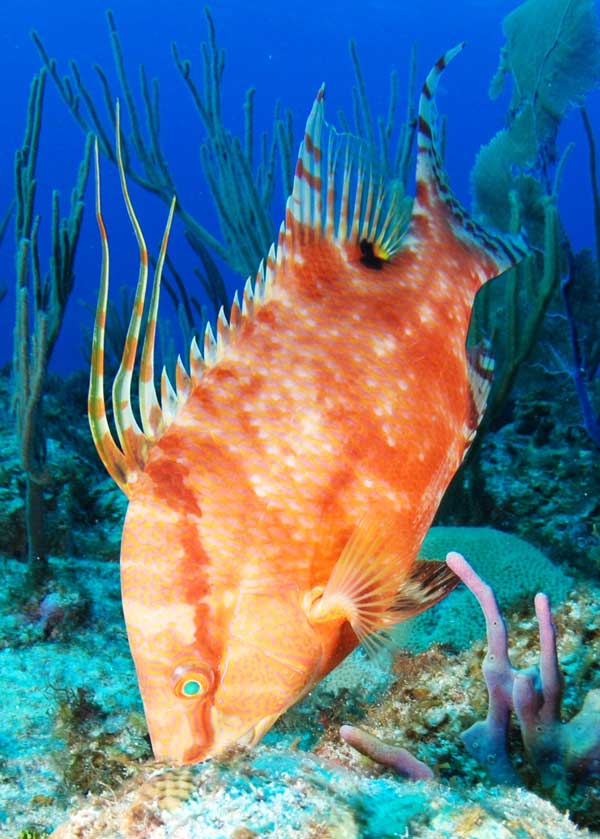Lachnolaimus maximus (*) Cladus: Eukaryota Name Lachnolaimus maximus (Walbaum, 1792) Holotype: No types known. Type locality: No locality [probably Bahamas or Carolinas]. Synonyms * Labrus maximus Walbaum, 1792
* Walbaum, J.J. 1792: Petri Artedi sueci genera piscium. In quibus systema totum ichthyologiae proponitur cum classibus, ordinibus, generum characteribus, specierum differentiis, observationibus plurimis. Redactis speciebus 242 ad genera 52. Ichthyologiae pars III. Ant. Ferdin. Rose, Grypeswaldiae [Greifswald]. Pt. 3: [i-viii] + 1-723, Pls. 1-3.
A hogfish is a large wrasse, Lachnolaimus maximus, of the western Atlantic Ocean. Hogfish are plentiful in the Florida Keys, Bahamas, Caribbean, and they have been as far north as North Carolina and Bermuda, and into the Gulf of Mexico[1]. The meat is considered to be high quality with a soft, white, firm consistency. The meat is considered one of the finest eating due to its shellfish diet. It is a popular target for spear-fishermen, and rarely caught by conventional rod and reel methods. It has fourteen dorsal spines, eleven dorsal soft rays, eleven anal spines, and ten anal soft rays. The coloring varies but is usually brownish red with a black spot at the bottom of the dorsal fin. Its habitats are often over coral reef areas. The fish's diet is mainly mollusks, crabs, and sea urchins. The Mexican hogfish is often a pinkish color with a fleshy bump on the male's forehead. The Hogfish is first a female then a male. The color pattern changes drastically between juvenile and adult. The head of the male resembles a hog's snout. Related species include the Spanish Hogfish (Bodianus rufus) and Spotfin Hogfish (Bodianus pulchellus). References 1. ^ Humann, Paul, 1994, Reef Fish Identification, 2nd Edition. Edited by Ned Deloach. New World Publications, Inc.
Source: Wikipedia, Wikispecies: All text is available under the terms of the GNU Free Documentation License |
|

